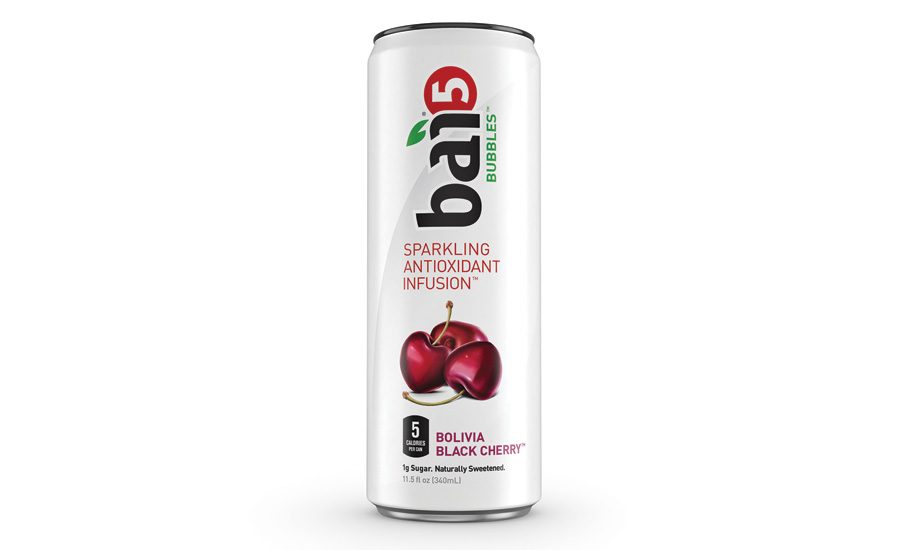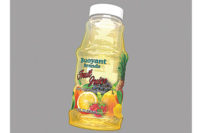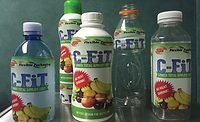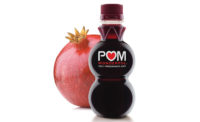Forty years ago, Kenner Products released Stretch Armstrong, an action figure that could stretch from its original 15-inch frame to four or five feet. Although not in the toy-making business, packaging materials manufacturers have had to literally stretch their capabilities to keep pace with beverage-makers seeking clean, sustainable labels that feature vivid colors, images, specialty inks and soft-touch finishes to connect with consumers.
“Beverage-makers want packaging that is aesthetically pleasing to consumers, with different-shaped bottles, various colors, coating and tactile varnishes being used to engage them through touch and feel,” says Overnight Labels Inc. President Don Earl. “Matte and spot-matte varnishes are the rage right now.”
The Deer Park, N.Y.-based company offers beverage manufacturers solutions to help products stand out, including tactile varnishes, foils, metallic inks and embossing. “We’re known for our flexibility in scheduling, yet our capabilities rival those of the larger printing companies [while] giving our clients the quick turnaround times that are sometimes needed to make their business work.”
Justin Slarks, director of marketing for Sleeve Seal, Little Rock, Ark., says that small start-ups bringing new products to retail shelves need the expertise of co-packers and contract bottlers to succeed. “Bottlers enjoy the flexibility of shrink labels since their lines can run different containers for customers and switch back and forth economically and easily,” he says. “Shrink labels are affordable, durable and offer loads of design options. One bottle style can be labeled a million different ways, so beverage-makers can create new products with a new and unique look for each.”
Rochester, N.Y.-based Hammer Packaging’s Vice President Louis Iovoli echoes similar sentiments. “The beverage industry is using packaging more and more as a primary means to communicate their value proposition,” he says. “They need maximum impact with their message to be seen on a crowded shelf and be understood. Some are using the shape of the package to draw attention and then the label to communicate.”
Additionally, more beverage manufacturers that use cans are opting for shrink sleeve, Iovoli notes. “While this may seem like adding costs to the package, brands like Bai Brands see it as a huge point of differentiation,” he says. “Our web-offset printed shrink sleeves make cans reflect quality, uniqueness and premium.”
Consumer connection
Elk Grove, Ill.-based Fort Dearborn Co.’s Marketing Director Gwen Chapdelaine says that shrink sleeves provide maximum brand impact with 360-degree, eye-catching coverage from top to bottom that allows beverage-makers to differentiate products and lines. The full-bottle coverage also provides added protection, she says.
“Sleeves can incorporate tamper evidence…and offer promotional and merchandising opportunities for beverage-makers,” she adds. “Another benefit of shrink sleeves is the complete coverage of complex-shaped containers. This feature of shrink sleeves allows for the incorporation of light barrier features within the label thus increasing shelf life of light-sensitive products such as vitamin-fortified waters and dairy products.”
Additionally, shrink sleeves easily conform to unique container shapes and can be applied to glass, plastic, metal or aluminum containers, notes Kara Hewart, marketing coordinator of Dawsonville, Ga.-based SleeveCo Inc. Shrink and stretch sleeves also are scratch resistant and protect graphics from scuffing and tearing, she adds.
“Shrink sleeves offer advantages for canned beverages because they increase the product’s shelf life and freshness and eliminate the need for printed cans,” she says. “This can save companies warehousing space and container overages because they can use blank stock cans instead of printed cans.”
The use of on-the-go and ergonomically shaped containers also is conducive to shrink-sleeve labeling along with its ability to utilize tamper-evident bands, Hewart says. “Tamper-evident bands are one of the driving factors in shrink growth. …They make it obvious that the product has not been tampered with, therefore, aiding in consumer confidence.”
The recycling impact of a product’s packaging and understanding its carbon footprint is vitally important, says Jim Mallon, director of sales for York, Pa.-based C-P Flexible Packaging (C-P). The company recently added a new energy-efficient stretch design to its portfolio — the C-Fit Sleeve — a no heat shrink look that has the ability to conform to low- and medium-shrink applications without the need for a heat tunnel, he says.
Available for single and multi-pack packaging, C-Fit is an alternative for low- to medium-shrink and Roll On Shrink On (ROSO), he adds. Other benefits include a simplified application process, a 20-40 percent reduction in label costs, high elasticity that conforms to the bottle shape and a density of less than one gram for easy separation with no glue required.
Regardless of a recycler’s capabilities, Hammer Packaging offers an APR approved shrink-sleeve material for companies that want packaging to be more readily prepared for recycling, Iovoli notes. “This is a floatable film that helps recyclers get the highest quality flake from their processes,” he says.
Overnight Label also is committed to sustainability, it says. The company offers its polylactic acid (PLA) shrink sleeves — Earth First PLA — which is 100 percent compostable, and oriented polystyrene sheet (OPS) and PET glycol-modified (PETg), which offers better recyclability than the synthetic plastic polymer polyvinyl chloride (PVC), Earl says.
Solutions that work
In addition to using thinner film materials, Sleeve Seal manufactures machines that can apply shrink sleeves at fast speeds — up to 1,600 a minute — at a high level of accuracy with little downtime, according to Slarks.
Additionally, the company offers 10-color printing using thin film materials in the 25-micron range. “Very few machines can apply this new generation of thin films — especially at speed,” Slarks says. “There are savings in running thin films — big savings in raw materials, more labels per roll for decreased shipping costs and fewer changeovers. It’s a win-win. …Designers can run wild with their ideas and can include the same level of holographic anti-counterfeiting technology that is applied to currency, if needed.”
Fort Dearborn’s Chapdelaine notes that improved technology, lighter materials and flexible printing solutions are helping to showcase beverage brands. The company offers a range of products, including digital for prototypes, regional promotions, personalization and small volumes, flexographic for mid-size volumes, and rotogravure for longer production runs. “Our material options include PVC, PETg (clear and white), OPS and PLA as well as floatable shrink films designed to improve the recyclability of PET beverage containers,” she says.
Along with full-body shrink sleeves, tamper-evident bands and multi-packs/on-packs, Fort Dearborn offers shrinkable cut-and-stack labels, roll-fed shrink labels and roll sleeves. “[These] give customers the benefits of shrink sleeves for other label formats,” Chapdelaine says.
Taking a concept from 3-D imaging to digital samples to a finished product is one of Hammer Packaging’s strengths, Iovoli notes. “We convert using digital, flexo- or web-offset and are uniquely positioned in the web-offset category for high-volume work to quickly launch new products with the highest print quality and no cost for printing plates,” he says. Iovoli adds that the company’s VSOP Web-Offset Technology can print high-quality shrink sleeve, roll-fed and foam labels.
With more than 50 years of packaging experience, C-P invests in printing and converting technologies to keep pace with industry demands, Mallon notes. “Knowledge and innovation goes into everything we do,” Mallon says. “We offer an extensive array of shrink- and stretch-sleeve sleeve options. Using our advanced Flexpath development approach, we seamlessly integrate design, printing, labeling and converting capabilities to define an executable pathway for bringing the most innovative packaging ideas to life.”
SleeveCo’s Hewart also stresses the importance of a knowledgeable, experienced prepress department to ensure a smooth production process. “Our in-house graphics and prepress department ensures the integrity of the brand through accurate color matching, complex graphic design capabilities, fabrication of our own flexographic plates and rotogravure cylinders, and planning and compensating for how a label will shrink onto the bottle during production.”
Driving packaging innovations
When it comes to packaging beverages, shrink and stretch labels will remain at the forefront of the market particularly because the population is growing and new products will continue to be formulated that need product differentiation, experts note.
“Continued developments in new inks, coatings and substrates to further differentiate brands as more companies are utilizing shrink-sleeve labels [are] on the horizon,” Fort Dearborn’s Chapdelaine says.
C-P’s Mallon notes a continued push toward thinner gauge material will be at the forefront, as well as a drive to design for recycling and continued development of alternatives to traditional shrink technology. “There will be further developments in application equipment technology for higher line speeds as well as improvements in heat tunnel technology,” he adds. ”Continued innovation will include more new look options using specialty inks (metallic, matte finishes), as well an increased interest in expanded gamut print.”
SleeveCo’s Hewart also notes innovations for shrink sleeves. “Super-stretch sleeves have been developed to offer the same 360-degree graphic coverage with the added benefit of cost savings and sustainability,” she says. “These labels use less material, conform to the shape of bottles without heat or glue, are fully recyclable and use up to 30 percent less material.”
Hammer’s Iovoli adds: “Shrink sleeves are going to continue to grow and dominate the market. They eliminate the need for glue, are easy to machine apply, and give the brand so much more opportunity to be unique. We see a strong future for shrink sleeves.”







